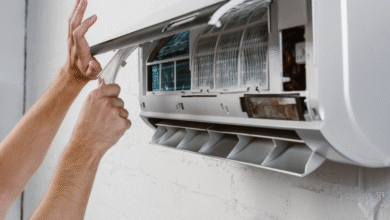Innovative Solutions for Industrial Cleaning: The Future of Vacuum Technology

The Importance of Efficient Industrial Cleaning
Efficient industrial cleaning is crucial for maintaining a safe and productive work environment. Frequent maintenance extends the lifespan of equipment, minimizes operational disruptions, and guarantees adherence to health and safety standards. One popular method that has gained traction is hydro excavation, which uses high-pressure water to remove debris and soil. This method is especially beneficial in sensitive areas where traditional digging might damage underlying infrastructure or pipelines. According to the International Labour Organization (ILO), good housekeeping can prevent workplace incidents and enhance operational efficiency. In industries where precision and minimal disruption are paramount, advanced cleaning solutions are not just a luxury but a necessity. Proper industrial cleaning mitigates risks, enhances productivity, and complies with stringent safety standards that protect employees and the environment.
Latest Innovations in Vacuum Technology
The field of vacuum technology has seen remarkable advancements in recent years. Modern vacuum systems are more powerful, efficient, and versatile. One notable innovation is the integration of HEPA filter technology, which significantly enhances air quality in industrial settings. These filters are created to capture and trap tiny particles, guaranteeing cleaner and healthier indoor spaces.
Smart vacuums with IoT capabilities can also be monitored and controlled remotely, optimizing the cleaning process. These advanced systems provide:
- Real-time data analytics.
- Enabling operators to make informed choices and adapt cleaning protocols in real-time.
- Thus improving efficiency and reducing resource wastage.
HEPA Filters
High-efficiency particle air filters (HEPA filters) are created to capture minuscule particles that regular filters could overlook. These advanced filters capture particles as small as 0.3 microns, ensuring a cleaner and safer work environment, particularly in industries that handle hazardous materials. For example, in pharmaceutical manufacturing and food processing plants, HEPA filters help maintain sterile conditions, preventing contamination and ensuring product quality.
IoT and Remote Monitoring
With the advent of IoT (Internet of Things), vacuum systems can now be interconnected with other industrial equipment. This connectivity allows for real-time monitoring and adjustments, significantly enhancing operational efficiency. Remote monitoring also helps in timely maintenance, thereby reducing unexpected downtime.
Choosing the Right Vacuum System
Selecting the appropriate vacuum system for your specific industrial needs can be daunting. Several factors must be considered, including the type of debris to be collected, the environment in which the vacuum will operate, and the required level of filtration. Seeking advice from professionals in the field and carrying out extensive research can assist you in making a well-informed choice. Engaging with suppliers who offer modular systems can provide added flexibility, allowing for custom configurations that meet unique operational demands.
It may also be beneficial to look into systems that offer customizable features to match your operations’ unique requirements. Specific features like adjustable suction power, various filter options, and ergonomic designs can significantly affect performance and user satisfaction. Investing in a system with user-friendly interfaces and easy-to-change components can streamline maintenance processes and extend the equipment’s lifespan.
Types of Debris
Different industries generate different types of waste, and choosing a vacuum system to handle the specific materials you’ll be dealing with is crucial. For example, construction sites may need heavy-duty vacuums capable of sucking up large debris, while pharmaceutical labs may require units equipped with HEPA filters to handle fine particles. Understanding the nature of the debris—whether wet, dry, hazardous, or non-hazardous—will guide you in selecting a vacuum with suitable capacity and filtration capabilities.
Operational Environment
Another important consideration is the environment in which the vacuum will operate. Industrial environments can differ significantly in temperature, humidity, and the existence of dangerous substances. Make sure to select a vacuum system designed to withstand these conditions effectively. For instance, vacuums used in chemical plants need to be corrosion-resistant and explosion-proof to ensure safe operations.
Future Trends in Industrial Vacuum Technology
The future of industrial vacuum technology is promising, with continuous innovations on the horizon. Trends such as automation, energy efficiency, and the integration of AI are set to revolutionize the industry. Robots equipped with vacuum technology could soon perform complex cleaning tasks with minimal human intervention, minimizing the chance of human mistakes and improving overall efficiency. Sustainable practices are becoming increasingly important, with manufacturers focusing on producing systems that minimize environmental impact. Using eco-friendly materials and energy-efficient designs is gaining traction as businesses become more environmentally conscious. Companies are now prioritizing the development of vacuum systems that meet operational needs and align with corporate sustainability goals.
Automation and AI
Integrating AI into industrial vacuum systems allows for more innovative and efficient cleaning processes. These intelligent systems can adapt to different cleaning scenarios, making real-time adjustments to optimize performance. Automation also reduces labor costs and enhances safety by eliminating the need for human intervention in hazardous environments. AI-driven vacuums can map out cleaning routes, identify obstacles, and even learn from past operations to improve future performance.
Sustainability
As businesses strive to become more sustainable, the demand for eco-friendly vacuum systems is rising. Producers are currently concentrating on using recycled materials and creating energy-efficient technologies to decrease carbon footprint. These enhancements contribute to environmental improvements and provide financial benefits in the future by reducing energy use. Some companies are exploring using renewable energy sources to power their vacuum systems, further enhancing their green credentials.




